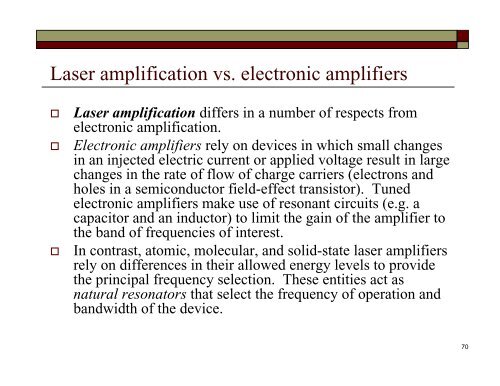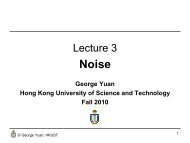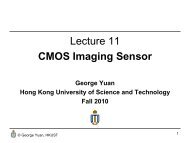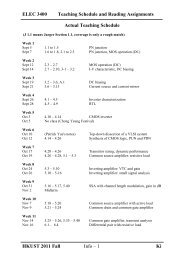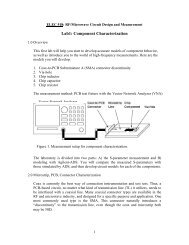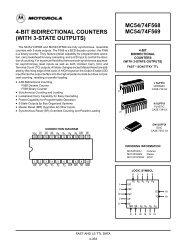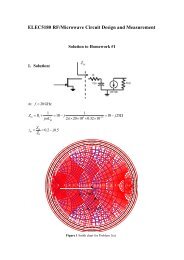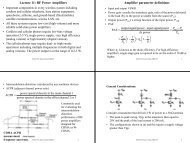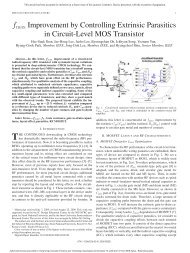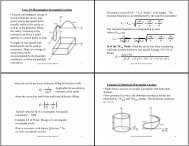Lecture 8: Laser amplifiers
Lecture 8: Laser amplifiers
Lecture 8: Laser amplifiers
Create successful ePaper yourself
Turn your PDF publications into a flip-book with our unique Google optimized e-Paper software.
<strong>Laser</strong> amplification vs. electronic <strong>amplifiers</strong><br />
<br />
<br />
<br />
<strong>Laser</strong> amplification differs in a number of respects from<br />
electronic amplification.<br />
Electronic <strong>amplifiers</strong> rely on devices in which small changes<br />
in an injected electric current or applied voltage result in large<br />
changes in the rate of flow of charge carriers (electrons and<br />
holes in a semiconductor field-effect transistor). Tuned<br />
electronic <strong>amplifiers</strong> make use of resonant circuits (e.g. a<br />
capacitor and an inductor) to limit the gain of the amplifier to<br />
the band of frequencies of interest.<br />
In contrast, atomic, molecular, and solid-state laser <strong>amplifiers</strong><br />
rely on differences in their allowed energy levels to provide<br />
the principal frequency selection. These entities act as<br />
natural resonators that select the frequency of operation and<br />
bandwidth of the device.<br />
70


